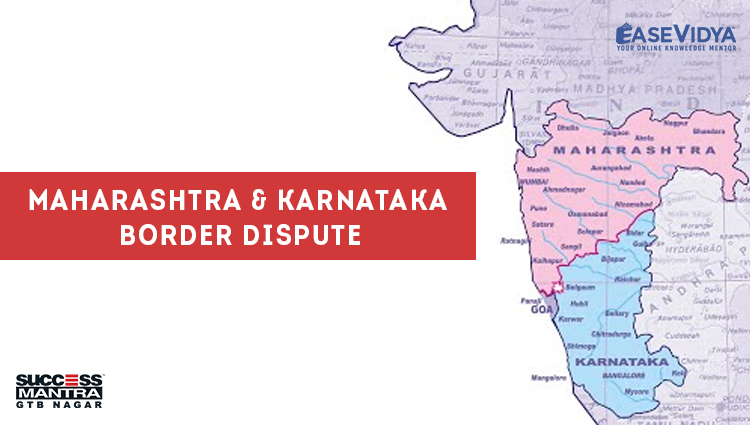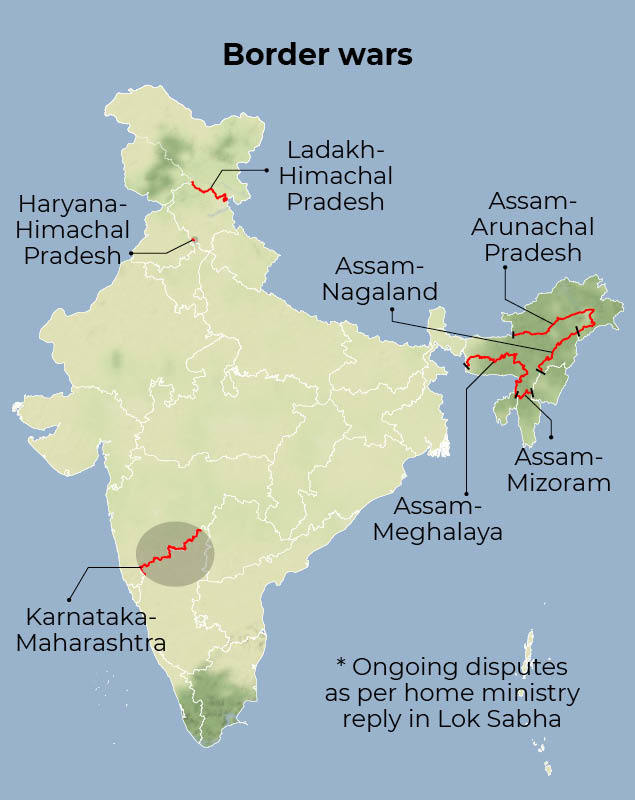Description

Copyright infringement not intended
In News
- The State Assembly of Maharashtra passed a unanimous resolution to support a legal battle to resolve the border dispute with Karnataka.
Maharashtra-Karnataka border dispute
- The Maharashtra-Karnataka border dispute is decades-old, having its origins in the states’ reorganisation in the 1950s.
- Both Maharashtra and Karnataka were formed in 1960. But since its inception, Maharashtra has claimed that 865 villages along the border, including Nippani and Belgavi (earlier Belgaum), should be merged with it.
- Karnataka has asserted rights over 260 Kannada-speaking villages along the Maharashtra border.
- The former Bombay Presidency was a multilingual province, including some parts of North Karnataka.
- In 1948, the Belgaum municipality requested that the district, having a predominantly Marathi-speaking population, be included in the proposed Maharashtra state.
- The States Reorganisation Act of 1956 made Belgaum a part of the then-Mysore State (which was renamed Karnataka in 1973).
- When state boundaries were redrawn on linguistic lines as per the States Reorganisation Act of 1956, Belagavi became part of the erstwhile Mysore state.
- Maharashtra claims that parts of Belagavi, where Marathi is the dominant language, should remain in Maharashtra.
- The Mahajan Commission was set up by the Union Government of India in 1966 to look into the border dispute.
- In its report, the Commission recommended that 264 villages should be transferred to Maharashtra and that Belgaum and 247 villages should remain with Karnataka.
- Maharashtra rejected the report, calling it biased and illogical. Despite demands from Karnataka, the Union government never implemented the report.
- In 2004, the Maharashtra government moved the Supreme Court for settlement of the border dispute. The case is now pending in the apex court.In the last Parliament session, The Union Home Ministry (MHA) informed the lok sabha that 11 States and one Union Territory have boundary disputes between them.

The possible reason behind Inter-State Border Disputes
- States Reorganisation: Several inter-state border disputes have their roots in the reorganisation of states in the 1950s (which) was primarily based on language.
- British rule: Many of these state demarcations were based on district boundaries created by the British.
- Geographical complexity: Rivers, hills and forests straddle two states in many places and borders cannot be physically marked.
.jpg)
Way Forward
- Interstate border disputes can be resolved by the states themselves or by the Centre through dialogue and political settlements.
- The Union Government can work as a facilitator or a neutral mediator.
- The Parliament can bring a law to alter state boundaries, such as the Bihar-Uttar Pradesh (Alteration of Boundaries) Act of 1968 and the Haryana-Uttar Pradesh (Alteration of Boundaries) Act of 1979.
- Disputes can also be settled by the Supreme Court under its original jurisdiction. Article 131 of the Indian Constitution says “Subject to the provisions of this Constitution, the Supreme Court shall, to the exclusion of any other court, have original jurisdiction in any dispute;
- Between the Government of India and one or more States.
- Between the Government of India and any State or States on one side and one or more other States on the other.
- Between two or more States.
- Article 263 of the Constitution gives powers to the President to set up an Inter-state Council for the resolution of disputes between states.
- Inter-state disputes need to be settled quickly and impartially otherwise they become festering sores which create friction, prevent development, give a perverse direction to the energies of people and governments and generate hard feelings on all sides.

https://indianexpress.com/article/explained/how-are-disputes-between-states-resolved-8349561/


















